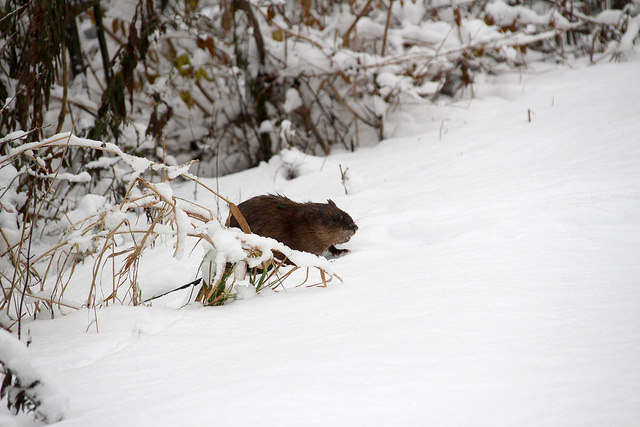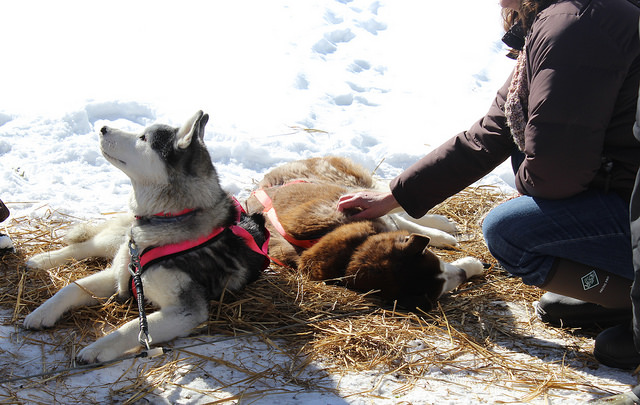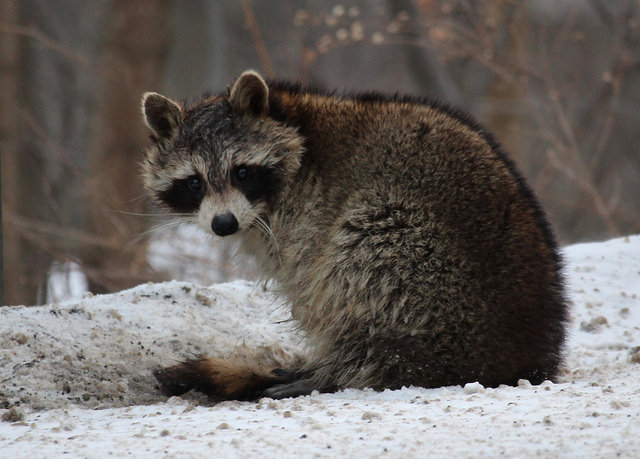When it comes to animals, I have a special spot in my heart for every creature. Whether it is a turtle crossing the road or a spider trapped in my bathtub, I have always been one to help an animal in need. Most of my life, I have interacted with mammals; I am fascinated by their diversity yet also puzzled by their similarities. As a seasonal naturalist here at Audubon, I travel to virtually every elementary school in the county plus a handful in PA. I get to venture into classrooms to teach children about mammals, amongst many other topics, and show them unique characteristics that set mammals apart from other creatures. My favorite is when the epiphany hits and they realize we are mammals too!
We are mammals that get bundled in winter coats, make fire, and drink hot cocoa at this time of year, but what do other mammals do? The answer is truly fascinating. Mammals have acquired certain adaptations over time that allow them to survive in the harshest of conditions. As the temperature drops, you would assume animals outside need to use more energy to stay warm. However with less food available and blankets of snow covering any vegetation, there is not enough food available to create that oh so important energy. Being endotherms, or animals that generate heat within the body, mammals need that high internal temperature so they can function, reproduce, and protect themselves. Yet when those outdoor temperatures hit freezing and below, energy expenditure exceeds energy creation and is no longer effective. Thus mammals in the North either store energy before winter or reduce energy levels during winter to stay warm.

Certain mammals have figured out that if they enter a reduced state of activity, also called hibernation or torpor, they can survive the 5-6 months of winter. This is not simply sleeping! Physiological changes are happening to the animal that include a slower heartbeat, lower body temperature, and slower breathing. Brown bats, groundhogs, and jumping mice are a few mammals in this area that undergo these changes the entire winter and we can call it hibernation. How do they do this? It is not a choice, but a biological instinct that is induced by plants dying, colder nights, and shorter amount of sunlight. They use these extrinsic signals to begin their bodily changes.
Some mammals enter torpor, but not to the same extent, and we call it dormancy. Skunks, chipmunks, and raccoons go dormant for weeks at a time, but will occasionally wake up and wander on a nice day to eat and relieve themselves before becoming dormant again. Therefore, their body does not get as cold, and their heart and breathing rates do not slow as much as a true hibernator. Oh, and did I mention that animals other than mammals can also enter torpor? Birds can also enter torpor with similar adaptations, substituting feathers for fur.

And of course there are mammals in the area that suck it up and stay active all winter long. They do so by growing thicker fur, having small ears to conserve heat, and by burrowing or huddling together. Many of them have special adaptations that allow them to survive winter including changing their diets, having large feet to support them on top of the snow, or even spending most of the winter protected by the snow by staying under it. Winter wildlife is remarkable in its methods for not only surviving, but thriving.
I often imagine what winter would be like for me without the warm bed, blankets, and hot chocolate. Would I be able to survive? After all, there are humans still living in the Arctic Circle.
I love the cold and embrace it every year. I respect my fellow mammals that live outside November through March and tough out the harsh weather. Nature is a wonderful yet unforgiving place, so I make sure to take plenty of cold, snowy hikes and observe what evidence of life I see. I offer silent support to creatures I come across.

As winter seems to have finally arrived, this is a great opportunity to discover some of those active mammals and other creatures. Visit Audubon to become one of those active mammals, hiking trails, attending Snowflake Festival on February 2, or visiting the new indoor Nature Play Room on the third floor of the Nature Center.
Emily Rechin is a seasonal naturalist at ACNC.
Audubon Community Nature Center builds and nurtures connections between people and nature. ACNC is located just east of Route 62 between Warren and Jamestown. The trails are open from dawn to dusk as is Liberty, the Bald Eagle. The Nature Center is open from 10 a.m. until 4:30 p.m. daily except Sunday when it opens at 1 p.m. More information can be found online at auduboncnc.org or by calling (716) 569-2345.


Recent Comments